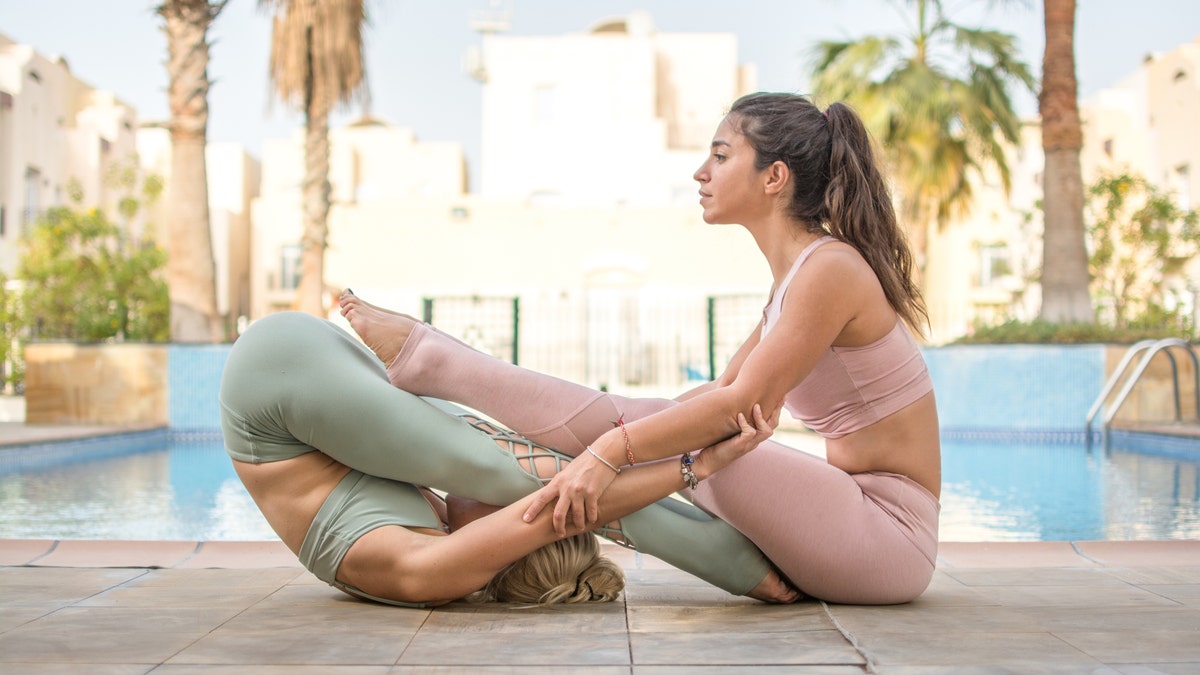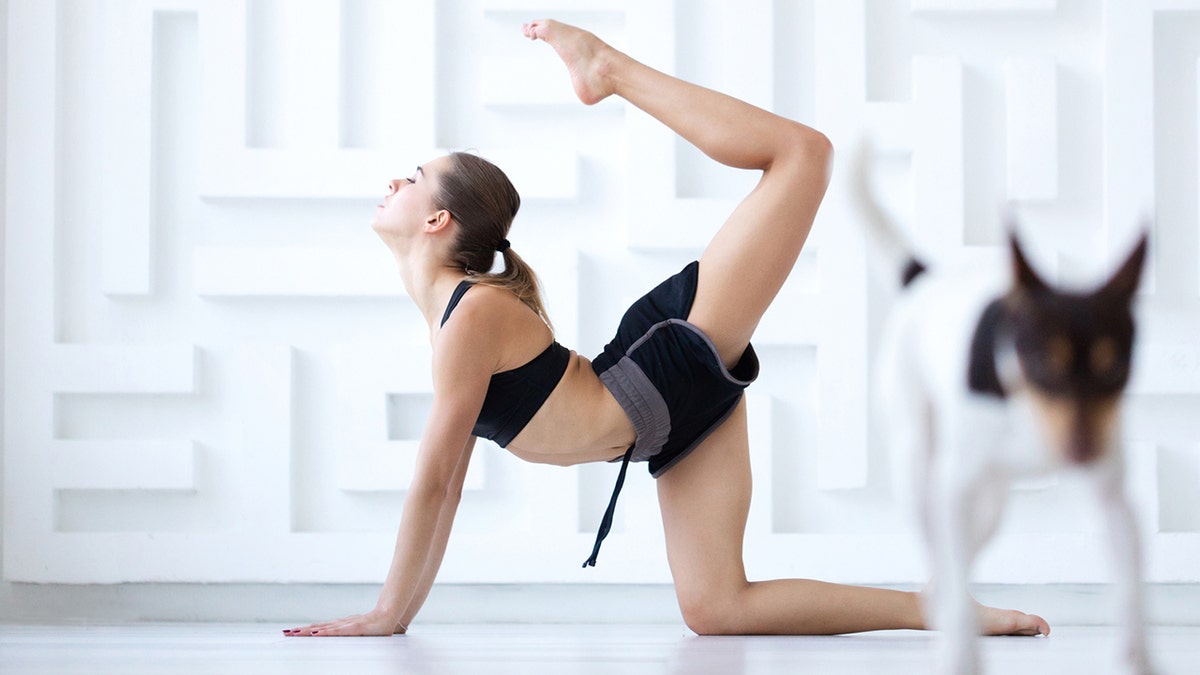Puppy yoga gaining popularity as a new twist on the workout
There are a bunch of puppies running around and you’re getting in your workout for the day – understandably, puppy yoga is becoming a big hit with animal-loving yogis.
The average yogi spends $62,640 on yoga in a lifetime, according to new research.
A study conducted by OnePoll in conjunction with Eventbrite examined the yoga trends and habits of 2,000 Americans and found dedicated yoga fans will shell out just under $90 on yoga a month, or $1,044 across a full year.
In a lifetime, a yogi will shell out $28,800 just on yoga classes and an additional $33,840 on other yoga essentials like apparel, mats and headbands.
WATCH: WHY PUPPY YOGA IS GAINING PUPULARITY
The financial cost associated with yoga doesn’t stop there — especially for the growing number of yogis looking for unique experiences. The average yogi is willing to spend $40 on a single, special, one-time yoga experience, while 8 percent of yogis are willing to spend more than $100 on a memorable yoga experience.
But these extravagant costs are worth it for many. Eighty-seven percent of people who have tried yoga are in a better mood when they leave the studio — which is why they keep coming back for more. Of the 2,000 people studied, 62 percent had done yoga at least once in their life. Yogis practice an average of twice per week, while yogis who prefer group classes practice even more often: 16 percent of them practice at least five times a week.

The yogi smashed into the ground might be having as much fun, though. (iStock)
“People have been gathering together to practice yoga for thousands of years," said Tamara Mendelsohn, the VP and GM of Consumer at Eventbrite. "In 2019, we’re seeing event creators come up with new and creative ways for communities to practice together. There are a variety of yoga classes on the rise, from goat yoga to disco yoga, giving people an opportunity to get in on some of the trendier wellness activities out there.”
When it comes to experimental yoga styles to try in 2019, laughter yoga topped the list of quirky yoga classes Americans can’t wait to try. Other notable and unique yoga classes that made it into the top 10 include silent disco yoga (#3), cat yoga (#6), beer yoga (#7) and naked yoga (#8).
People wish they were taking more classes in experimental settings beyond the typical yoga studio than they actually are. Currently, 66 percent of people do at least one class per year in an experimental setting, but 83 percent wish they did.
ALPACA FARM IN ENGLAND OFFERING ALPACA YOGA, ALPACA PICNICS, ALPACA 'CONNECTION' EXPERIENCES
Shelling out for these unique, in-person yoga classes has an impact: 56 percent of people who typically do yoga in group classes say they are “very happy” after a yoga class, compared to just 36 percent of people who practice individually.

Or in the company of their ever-present dogs. (iStock)
All of these types of yoga share a common theme: fun and relaxation. In fact, the biggest reason for practicing yoga is to release tension from the body. Other notable reasons include: to get stronger physically and mentally (52 percent); to de-stress (51 percent); to feel happier (43 percent); and simply to work out (41 percent).
With the new year upon us, 64 percent of those studied revealed that they plan to practice more yoga in the upcoming months. People plan to squeeze these extra yoga sessions into their day over lunch: 11:17 a.m. is a yogi’s optimal time of day to practice.
Americans gravitate to wellness activities like yoga for a variety of reasons. But the top reason bringing people into a yoga studio is stress release. While three in 10 will spend time on their yoga mat specifically to relax this year, 38 percent plan to engage in more wellness activities off the mat, as well, to handle their stress in 2019.
When it comes to yoga, in-person classes aren’t the only way yogis find stress relief. In addition to in-person classes, people also turn to yoga guided by video or app (24 percent) and meditation guided by video or app (22 percent) to de-stress.
CLICK HERE TO GET THE FOX NEWS APP
“Event creators can go beyond the practice itself to make an experience that connects people to themselves and each other," Mendelsohn added. "Whether that means having animals join in the practice to help people de-stress, or providing time for people to meet one another and chat over a kombucha after class, any of these elements can create a stronger community around your yoga events.”

